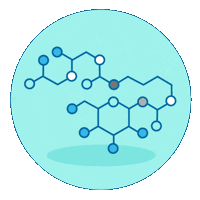Sunburn treatment
Exploring the potential of AAGP® for protecting skin against UV radiation
A sunny day can feel like a balm — for a while. But it only takes a short time for ultraviolet rays from the sun to cause damage to the skin, resulting in a sunburn. Later, this damage may show up as wrinkles, dark spots, or even skin cancer.
Even those most vigilant people, forget their sunscreen and are bound to experience sunburns. There currently are no treatments other than Aloe Vera to help relieve pain and effects of sunburns. The oxidative and inflammatory damage from UV radiation could be alleviated by AAGP under the right conditions.
Treating and preventing sunburn is an important part of keeping skin healthy, and there may be new treatments on the horizon, made possible by AAGP®. The cell-reviving properties of this revolutionary molecule may hold the secret to protecting and repairing skin — and we’re beginning preclinical trials to find out how.

The causes of sunburn
Sunburn occurs when skin cells are exposed to too much UV light. Though this typically happens outdoors, in the sun, sunburn can also result from certain lamps, tanning beds, and other artificial sources of light — even welding torches. UV light isn’t only a concern on sunny days, either; without proper protection, skin can become sunburned even when it’s overcast, because UV rays can easily pierce cloud cover.
The UV rays penetrate the skin’s outer layers, damaging them. Resulting inflammation affects skin’s elasticity, its color, and can affect the body’s other systems as well. Underlying skin layers also can be damaged, and the radiation can go so far as to disrupt a cell’s DNA, leading to cancer.
Lack of skin protection, such as body-covering clothing or sunscreen, leaves a person susceptible to the skin-damaging effects of sunburn.
Symptoms of sunburn
A common symptom of sunburn may be pinkened or reddened skin — but that’s not the only symptom, and it’s not a universal one, either.
Note that someone with darker skin tones can experience sunburn. Some skin types may not redden under UV exposure, but nevertheless the underlying cells experience damage, that causes skin discoloration, deep wrinkles or risk of cancer.
Someone with sunburned skin may experience any of the following symptoms:
- Skin discoloration
- Skin that’s warm or hot to the touch
- Dry skin
- Peeling skin
- Blisters
- Pain
- Headache
- Fever
- Nausea
- Tiredness
Treating sunburn
Treating sunburn is still mostly a function of time, allowing the skin cells to slowly heal while treating symptoms with pain relievers, cold cloths, or aloe vera. Drinking water can help to rehydrate the body, while any blistered areas can be delicately covered and allowed to recede.
What’s missing from current sunburn treatments is an option to repair the cells themselves.

AAGP® as a potential solution
We believe AAGP® may carry the potential to revitalize and actually heal damaged cells exposed to UV radiation, specifically UVA and UVC wavelengths. In a preliminary study using both HeLa cells and adult fibroblasts, AAGP® applied to UVA- and UVC-exposed samples reduced cell death — in some cases up to 51%.
The anti-inflammatory protection suggested by this investigation points to the incredible potential of AAGP® in treatments for treating sun-damaged skin.
Market potential
The sun care market is poised to grow to nearly $17 billion by 2027, with a CAGR of 3.5%. Combined with the growing global effects of climate, atmosphere and pollution that worsen the effects of sun damage, interest in sun care and dermatological solutions is expected to be particularly strong in North America and Europe.
2019 Market Revenue:
$13.03 Billion

2027 Market Forecast:
$16.84 Billion
Support our research into protecting skin from sun damage — while also supporting your financial future. Contact your broker or reach out to our team at ProtoKinetix to learn about potential investment options.

